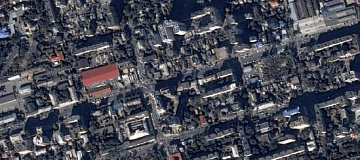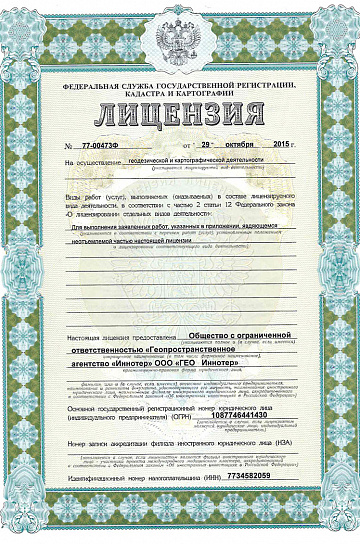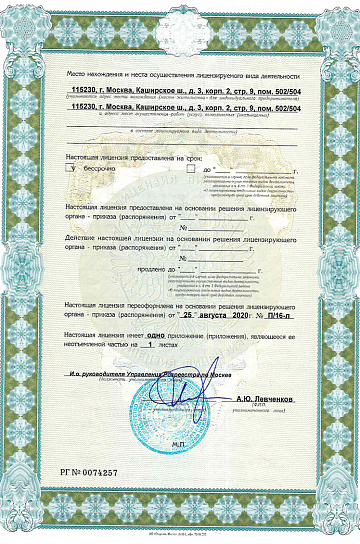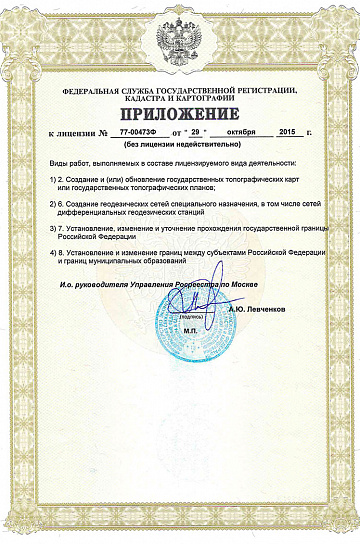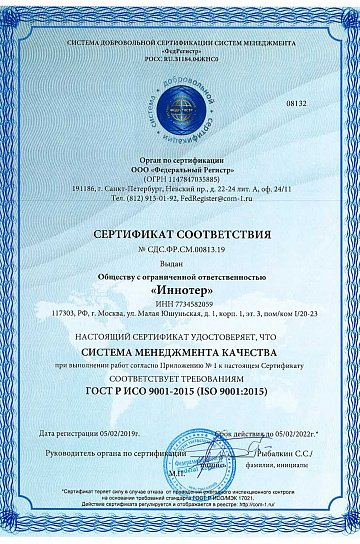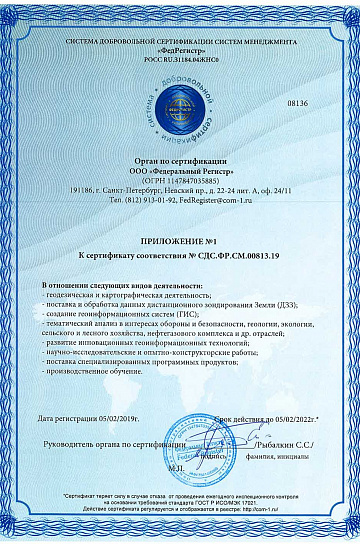Geodetic control points are fixed points on the ground that possess a set of planimetric and elevation coordinates. Control points are used to refine the georeferencing of satellite and aerial images of the Earth's surface by measuring the coordinates of a distinctive object on the ground and identifying this object in the image.
Control points are a fundamental element in the process of creating accurate orthophotos and digital elevation models, ensuring their reliability and applicability in various fields, including land surveying, agriculture, construction, environmental monitoring, and many others.

Prices for services
| Consultation | free |
|---|---|
| Selection of control points (if necessary), preliminary analysis of initial data, additional and reference materials | free |
| Cost of creating an orthophoto |
from 1 USD per 1 km2, calculated individually for each specific order and depends on the amount of processed remote sensing data, the presence (absence) of control points, and the digital terrain model used |
| Cost of setting control points on the ground | The cost of setting control points on the ground is from 4,500 rubles per point and depends on the location of the area, execution time, and the number of points. |
| Execution time | From 10 working days (depends on volume, complexity category, availability of remote sensing materials, additional and reference materials) |
The cost of execution is calculated on an individual basis, taking into account a specific of task.
After receiving the task description, we calculate the cost and send you a commercial offer.
Period of execution
| Agreement of issues, analysis of the availability of remote sensing data, additional and reference data | From 1 to 5 days* |
|---|---|
| Contract signing | From 1 to 5 days* |
| Image acquisition |
From 2 to 10 days** |
| Photogrammetric project planning | From 2 to 5 days* |
| Determination of control point coordinates on the ground | From 15 days* |
| Orthophoto creation | From 2 days* |
| Preparation of a technical report on the work performed | From 1 to 12 days |
| TOTAL TIME | From 10 days |
The completion time depends on the number of square kilometers and the type of product being created, the availability of archival remote sensing materials, additional and reference materials.
* working days
** from the date of receiving 100% advance payment for remote sensing materials
How to place an order:
Need for consultation?
Fill the form and we will contact you
Stages of service provision
The result of the provision of services
The customer receives the following results:
- Original satellite images (if necessary) with metadata file and RPC coefficients of the required spatial resolution;
- Orthophoto of the area with the detail and accuracy of the required scale;
- Technical report, including the composition, stages, and control of the completed work;
- Geodetic work report, including sketches, photographs of points on the ground, and a list of their coordinates.
The results are delivered on HDD/CD disks or via the Internet through FTP servers, and textual materials are provided in paper form to the customer's address.
Requirements for Source Data
Accurate geographic coordinates of the object in the required coordinate and elevation system (specialists from GEO INNOTER LLC will clarify the coordinates provided by the customer in any convenient form). If it is not possible to provide this information, the customer should specify the intended use of the received data, and specialists from GEO INNOTER LLC will analyze the requirements and propose the best solution.
Related services





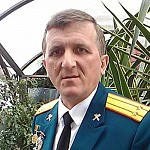
Customers
FAQ
- territory of interest (location/coordinates of the object in any convenient form, and area of the object);
- a specific problem that needs to be solved using the products being created.






